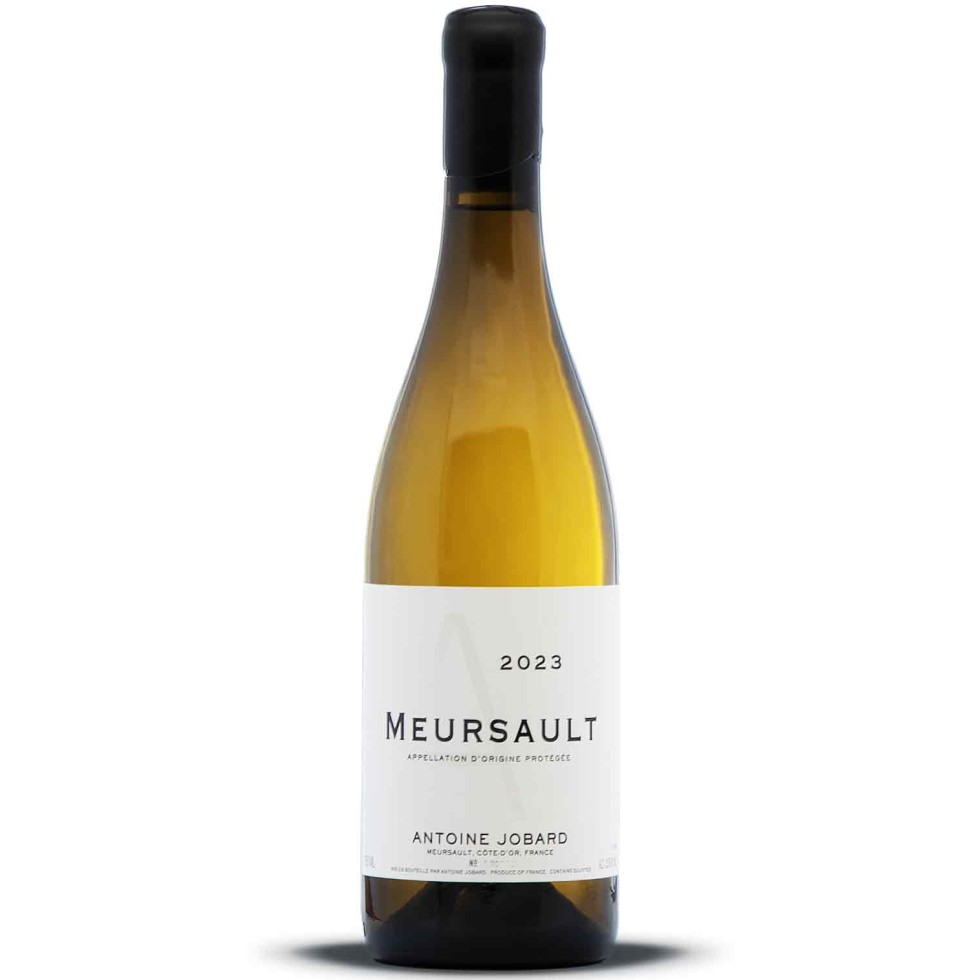
Meursault white 2023
- White
- 75 cl
Meursault white 2023 from the highly sought-after Antoine Jobard estate: intensity, fatness, complexity and velvetiness.
An absolute reference in Meursault!


Meursault white 2023 from the highly sought-after Antoine Jobard estate: intensity, fatness, complexity and velvetiness.
An absolute reference in Meursault!
Meursault white 2023
Complex
Powerful
Mineral
Fruity
Woody
Antoine Jobard has patiently built his reputation thanks to incredible work in the vineyard and the precision of his vinification. Today one of the best references of Meursault.
This Meursault 2023 offers all the characteristics of this very great white wine from Burgundy: fatness, opulence, length in the mouth and aromatic richness, on a vintage of very good level!
It has a bright golden yellow colour. The nose is fine but intense, with aromas of honey, dried fruit and vanilla wood. On the palate there are mineral notes. A wine of great length with a smooth finish.
12 to 14°
White Burgundy Wines Round and Powerful: Foie Gras, Creamy Sauce Fish, Grilled Sea fish, Lobsters, lobsters, Cream Poulardes, Civet Volailles, Epoisse, Roquefort, Bleu de Bresse
Appellation
VillageType of Wine
StillWine Making
Oak casksGrape Variety
ChardonnayHarvest
ManualBurgundy Region
Côte de BeauneVintage
2023Service
12 to 14 degreesCustody potential
2028Degree of alcohol
13°
There are observable but minor differences between the wines of the different Climats (named plots). In most cases, Meursault is greeny-gold in colour or canary yellow, leaning towards bronze as it ages. Limpid and brilliant, it sometimes exhibits silvery highlights. Its bouquet has strong aromas of ripe grapes. The young wine is redolent of toasted almonds and hazelnuts in a floral (mayflower, elder, bracken, lime, verbena) and mineral (flint) setting. Butter, honey, and citrus fruits are also present. On the palate it is rich and fat with a cheerful and appealing taste of hazelnut. Unctuousness and freshness are in silky balance. Long and structured, it needs time to mature - this is a great white wine for laying down.
Its aromatic power and exceptional balance between fat and acidity make it an aristocrat among burgundies. Unsurprisingly, it has a natural affinity with noble and fine-textured fish or meat, which it can match without overpowering. It performs a similar feat with joints of veal or poultry in white sauce, which are rendered sublime by the wine’s unctuous texture and long, distinguished acidity. Still better are grilled lobster, crawfish, or king prawns in sauce - dishes whose aromatic intensity and crisp texture match the lively and supple balance of the wine. Even blue cheeses and foie gras take to it immediately.
Serving temperature: 12 to 14°C.
The hard Comblanchian limestone which disappears deep underground around Nuits-Saint-Georges reappears here where, as one moves southward, red wines give way to whites. Nowhere in the Côte de Beaune does the
Chardonnay grape do better than it does here. Along the village streets are a succession of little houses belonging to the vineyard workers, mixed with more imposing dwellings. The stone-work on the 53 metre-high church tower looks like it could be the work of fairies. The excellent soils were planted with vines by the monks of Cîteaux as early as 1098. A small amount of red wine is produced here, though white definitely dominates. Meursault’s appellation of origin status dates from 1937.
The best soils are found at heights of 260 metres with exposures along an arc between East and South. They consist of Jurassic marls and marly limestones.
There are some patches of magnesian limestone. The ancient callovien limestone and argovien marls shave the crus.
Source : https://www.bourgogne-wines.com
A family of winegrowers who have always been established in the heart of Meursault, Antoine Jobard is now considered one of the greatest producers of great Burgundian wines.
The vines have always been cultivated with the greatest care and without treatment products. The wines are aged with great precision without trying to flatter them: on the contrary, by bringing out the imprint of the terroir.
Racy, elegant, complex and intense wines, from regional appellations to villages and premier crus (Meursault and Pommard in particular).
